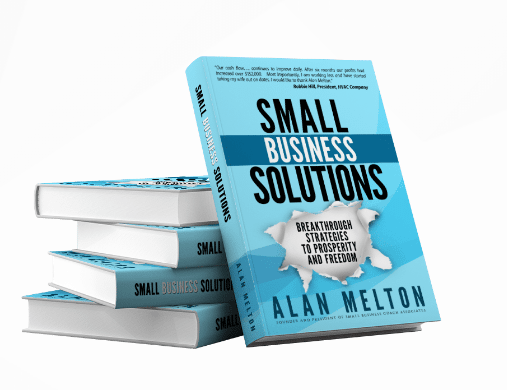VIEW BY TOPIC
- Finding Customers
- Business Systems
- Managing Employees
- Leadership
- Managing Money
Related Posts

Ready to Grow Your Business Fast?
Here’s How I Grew Five Businesses, and Eventually Sold One to a Fortune 500 Company.

A Business Owner’s Guide To Setting Up Trust Funds
As a business owner, you’re constantly looking for ways to protect your assets and your family’s financial future and pay the least amount of taxes possible. One way to do this is to set up trust funds. A trust is a legal arrangement wherein a trustee manages property or assets for the benefit of another person or the beneficiary.
The agreement names the trustee and beneficiary and sets the trust’s terms. The trustee is the person who manages the trust, and the beneficiary is the person who benefits from the trust funds. The terms of the trust determine how the trustee must manage the trust and how the beneficiary can receive distributions from the trust.
Trusts can be used for various purposes, including asset protection, estate planning, and tax planning. Trusts can be complex legal documents, so it’s essential to understand how they work and what options are available before you make any decisions. Read this article to understand more about trusts and how to set up one for your business.
The Different Types Of Trust Funds

Since there are various types of trusts, you should choose the one that meets your specific objectives. The most common types of trusts are revocable trusts and irrevocable trusts. Below is a discussion of the difference between revocable trust and irrevocable trust.
- Revocable Trusts
Revocable trusts, also known as living trusts, are the most flexible type. The terms of a revocable trust are alterable at any time, and the assets in the trust can be accessed and used as needed. Revocable trusts are often used to avoid probate, a time-consuming and expensive legal process that distributes a person’s assets after they die.
A revocable trust may be a good option if you want to maintain control over the trust property. This trust can hold business assets, such as inventory, equipment, and real estate. You can change the terms of the trust at any time and can even dissolve the trust if desired. However, a revocable trust will not protect the trust property from creditors. If you owe them money, they may be able to seize the trust property to satisfy the debt.
- Irrevocable Trusts
Irrevocable trusts are much more permanent than revocable trusts. Once an irrevocable trust is created, the terms are impossible to change, and the assets in the trust cannot be accessed or used without the beneficiary’s consent. Irrevocable trusts are often used for asset protection, tax, and estate planning purposes.
You may consider establishing an irrevocable trust if you want to protect the trust property from creditors. Once an irrevocable trust is created, you cannot change the terms of the trust or dissolve it. This means if you owe creditors money, they won’t be able to seize the trust property to satisfy the debt.
How To Set Up Trust Funds
Trusts can be complex and may prove challenging to set up on your own. It’s crucial to seek the advice of an experienced attorney when creating a trust for your business and to make sure that it meets your needs. Here are some steps to get you started:
- Step One: Determine The Purpose Of The Trust
The first step in setting up a trust is to determine the purpose of the trust. What assets will be placed in the trust? For what purpose will the trust be used? There are various types of trusts, each with a corresponding purpose. Therefore, you should opt for the type of trust that meets your specific needs and goals.
- Step Two: Choose A Trustee
The trustee is the person who will manage the trust and its assets. The trustee can be an individual, a corporation, or a trust company. When choosing a trustee, consider someone who is trustworthy and competent to manage the trust and its assets. Another thing to consider is whether the trustee will have any conflicts of interest in managing the trust.
- Step Three: Draft The Trust Agreement
The trust agreement is the legal document that creates the trust. The trust agreement will detail the terms of the trust, the duties of the trustee, and the rights of the beneficiaries. The trust agreement must be signed by the settlor (the person creating the trust) and the trustee, then notarized by a notary public.
- Step Four: Fund The Trust
The next step is to fund the trust with assets before it can begin operating. The settlor or any other person can transfer the assets to the trust. The details on how the trust is to be funded are stipulated in the trust agreement. The trustee will need to pay attention to these details and take the necessary steps to transfer the assets into the trust.
- Step Five: Manage The Trust
Once the trust is funded, the trustee will need to manage the trust and its assets following the terms of the trust agreement. The trustee will be responsible for investing the trust assets, paying the bills, and distributing the assets to the beneficiaries. The trustee will also keep accurate records of the trust assets and transactions. It’s essential to keep the records in a safe place where they can be available for review by the beneficiaries.
- Step Six: Terminate The Trust
The trust can be terminated at any time as long as the terms of the agreement allow for it. The trustee follows the procedures outlined in the agreement to terminate the trust. Once the trust is terminated, the trustee will need to distribute the trust’s assets to the beneficiaries. The trustee will also need to file a final tax return for the trust.
With the detailed steps listed above, you now have a better idea of how to set up a trust.
The Benefits Of Setting Up Trust Funds

Setting up a trust may have many advantages if you’re a business owner. Here are some of the benefits of setting up a trust:
-
- Avoiding Probate: Probate is the court-supervised process that takes place after someone dies. It can be a long and expensive process. However, it can be avoided if the deceased person’s assets are held in trust.
- Tax Savings: Depending on the type of trust you create, you may be able to save on taxes. For example, if you create a charitable trust, the assets in the trust may be eligible for a tax deduction.
- Asset Protection: If you’re concerned about your assets being taken away in a divorce or lawsuit, a trust can help protect these. This is because assets placed in a trust are not considered part of your estate.
- Providing For Your Family: If you have young children, setting up a trust provides for their care in the event of your death. You can also use a trust to provide for a family member with special needs.
- Gaining Control Over How Your Assets Are Used: If you want to make sure that your assets are used for a specific purpose, such as education or charitable giving, a trust can help you do that. You can specify how you want the assets to be used in the trust document.
As you can see, setting up a trust can bring several benefits.
Summary on Trust Funds
To sum up, a trust can be a helpful tool for you, your family, and your business. However, setting up a trust can be confusing and daunting. With careful planning and the help of a professional, setting up a trust can be a straightforward process. If you’re a business owner interested in setting up a trust, consult with a qualified attorney or financial advisor and discuss the type of trust that is right for you.














